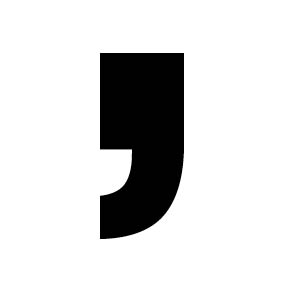The personal versus the universal at the Louvre Abu Dhabi launch
The personal versus the universal at the Louvre Abu Dhabi launch
There is this thing I do whenever I drive across the bridge that links Abu Dhabi to Saadiyat Island, the emirate’s cultural tourism megaproject: I look over towards the stretch of shoreline where the master plan envisages five major cultural institutions (Louvre Abu Dhabi, Zayed National Museum, Guggenheim Abu Dhabi, a performaing arts centre and a maritime museum) to take shape. I did it back when there wasn’t anything to see except an empty patch of sand. I did it when construction on the first of them, Jean Nouvel's Louvre Abu Dhabi, finally began. And I do it now, after the museum has been open for almost a week.
By most accounts, including my own, the launch of the Louvre Abu Dhabi has been a success. Local and international reviews have ranged from the sycophantic, to the pedantic, to the matter-of-fact. One of my favourites is this The Guardian op-ed by Tristram Hunt, director of the V&A, which offers a more optimistic take on the project than The Guardian’s own, more critical analysis by Oliver Wainwright. For deep-dive local reporting on the museum's birth story, I would recommend Nick Leech's coverage for The National.
My personal impression is that the Louvre Abu Dhabi has pulled it off – “it” being the feat of transcending much of the criticism levelled at the museum over the years by presenting a painstakingly curated, beautifully mediated visual narrative that is free from the usual Western biases, true to its local context yet also relevant to a global audience.
No small feat, especially in this part of the world. Although, as the people behind the museum keep saying, no content limitations were placed on them. Well, almost. Jean Francois Charnier, Scientific Director of Agence France Museums told me that the museum had gone through pains to be both intellectually open and culturally sensitive: “There is no problem of censorship in the Louvre Abu Dhabi. We will present exactly what we can find in any international museum but we try to avoid things that would be an element of provocation.”
So in case you are wondering, yes, the museum does feature nudity, as well as objects of Judaic origin and other perhaps surprising exhibits. According to one of Charnier's anecdotes, it was Sheikh Mohamed bin Zayed Al Nahyan, Crown Prince of Abu Dhabi and Deputy Supreme Commander of the UAE Armed Forces, who asked why no Torah had been included in an assembly of religious artefacts shown at a 2013 preview of the Louvre Abu Dhabi.
For the UAE, the museum's completion is, first and foremost, a significant step towards economic diversification; away from finite fossil fuels and towards a knowledge economy. Abu Dhabi has spent an estimated $ 1bn on the Louvre, which may sound far-fetched but is actually just a small part of a projected $ 27bn total investment in Saadiyat Island.
For the Arab world, a region rich in cultural heritage but lacking in cultural institutions, it is a vital new platform for civic activity, international exposure and academic research. Probably one of the most under-reported features of the museum is its research centre, which will specialise in comparative studies, a complex and notoriously underfunded form of research.
But enough already with the high-flying significance. By now, there isn’t much that hasn’t been said or written about this museum launch, my own coverage included. So what I would like to share here are ten of my favourite little moments from opening week that made the universal personal for me.
1. Watching workers rolling out the red carpet on 6 November 2017, ahead of the Louvre Abu Dhabi opening events.
2. Discovering a salute to my native Austria in the grand vestibule of the museum (see image above).
3. Explaining to a perplexed taxi driver that there is a big French museum on Saadiyat now.
4. Fantasising what it would be like to arrive at the museum by boat.
5. Watching this group take a giggly selfie (no stick) in the lobby on 12 November 2017.
6. Overhearing a young woman quietly plead with a security guard after he told her that selfie sticks are not allowed inside the galleries.
7. Observing journalists taking photos of and discussing the aesthetic merits of the museum’s fire hydrants.
8. Seeing museum director Manuel Rabate in the thick of it over the opening weekend – giving directions to visitors, chatting with children and dancing in the first row at a concert.
9. Getting a full tour of the galleries from Jean Francois Charnier. Always a pleasure to listen to someone who is excellent at what they do talk about their work.
10. Awkwardly but happily dancing along to Fatoumata Diawara’s mid-concert African dance lesson. Incredible music, incredible setting, incredible stage presence.
When I still lived in London, I used to be a regular at the Tate Modern and the British Museum, two places I still feel a strong personal affiliation towards. For many, they are the kinds of locations worth visiting, and even travelling for, again and again. Being surrounded by some of the most meaningful, beautiful, thought-provoking objects humankind has managed to create has a special effect, exhilarating and comforting all at once. It can be a little addictive. Over time, as people re-visit the Louvre Abu Dhabi, many will discover this nerdy cultural thrill and start forming a personal relationship with this museum, too; one based on innumerable experiences, from the most mundane to the most inspirational; one that will keep drawing them back in.
Personally, I’m already hooked.
PS: If you have any memories from your first visit to the Louvre Abu Dhabi to share, I’d love to hear about them.






